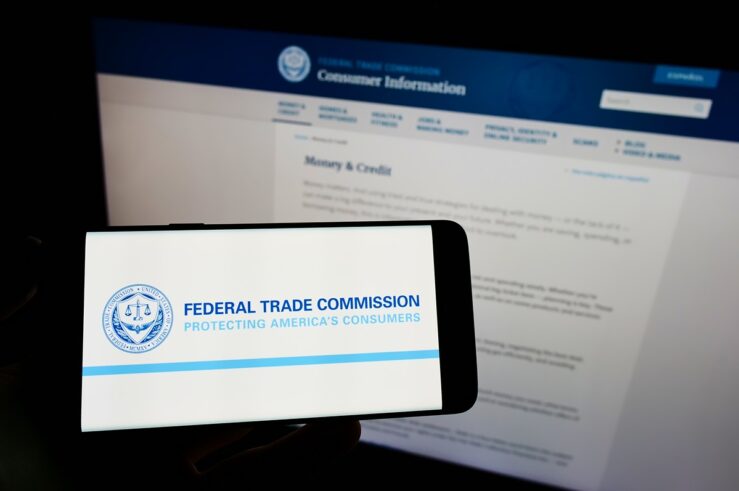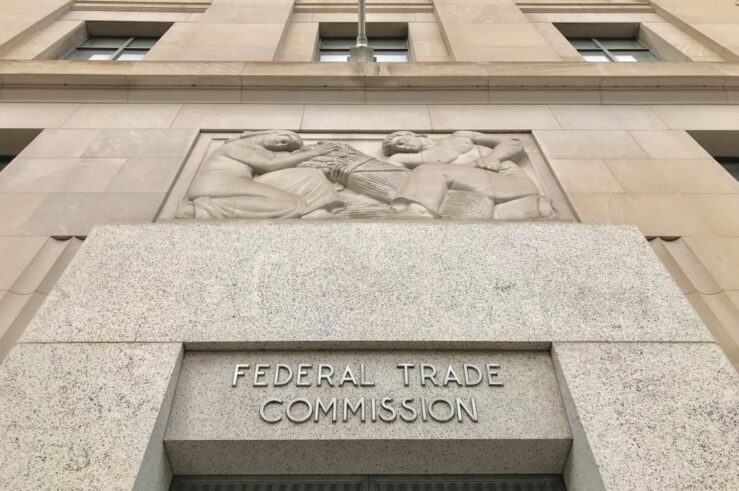Showing archive for: “FTC Act”
After Loper Bright, FTC Awaits Its Turn At-Bat
In an Agencies Roundup post several weeks ago, I revisited the Federal Trade Commission’s (FTC) newly adopted—and not-yet-effective—rule barring the use of noncompete agreements across much of the U.S. economy. It was not my first such post (my ninth, if I’ve counted correctly, and if readers will forgo armchair diagnoses of monomania). The last time ... After Loper Bright, FTC Awaits Its Turn At-Bat
The Waiting Game: Noncompetes, Google, Roll-Ups, and More
I’ll start with a bit of half-empty, half-full (and very partial) resolution in Federal Trade Commission (FTC) publicity. Losing by Winning or Just Losing or . . . ? A couple of weeks ago, the Wall Street Journal editorial board announced that: “Another Lina Khan Theory Loses in Court” And that was right, up to ... The Waiting Game: Noncompetes, Google, Roll-Ups, and More
All Roads Lead to Dallas: FTC Non-Compete Rule Set to Face Its First Legal Test in the Northern District of Texas
The sweeping prohibition on noncompete agreements promulgated by the Federal Trade Commision (FTC)—which would nullify 30 million contracts and preempt the laws of 46 states if it takes effect, as scheduled, on Sept. 4—is set for its first judicial test. In Ryan, LLC v. FTC, Judge Ada Brown of the U.S. District Court for the ... All Roads Lead to Dallas: FTC Non-Compete Rule Set to Face Its First Legal Test in the Northern District of Texas
The FTC Office of Patent Invalidation
The Federal Trade Commission (FTC) announced late last month that it had “expanded its campaign against pharmaceutical manufacturers’ improper or inaccurate listing of patents in the Food and Drug Administration’s (FDA) Orange Book, disputing junk patent listings for diabetes, weight loss, asthma, and COPD drugs, including Novo Nordisk Inc.’s blockbuster weight-loss drug, Ozempic.” Warning letters ... The FTC Office of Patent Invalidation
Once More Unto the Breach, Dear Friends: More Regulatory Overreach by the FTC
Go big or go home, they say. It’s not really an either-or choice: one can go big, and then go home. Not infrequently, an attempt to go big is what gets one sent home. The Federal Trade Commission (FTC) swung for the fences in April 23’s open meeting. On purely partisan lines, the commission voted ... Once More Unto the Breach, Dear Friends: More Regulatory Overreach by the FTC
Antitrust at the Agencies Roundup: Supply Chains, Noncompetes, and Greedflation
The big news from the agencies may be the lawsuit filed today by the U.S. Justice Department (DOJ) and 16 states against Apple alleging monopoly maintenance in violation of Section 2 of the Sherman Act. It’s an 86-page complaint and it’s just out. I’ll write more about it next week. Two quick observations: First, the ... Antitrust at the Agencies Roundup: Supply Chains, Noncompetes, and Greedflation
Will the FTC Scupper the Kroger/Albersons Merger?
The press is abuzz with news about the Federal Trade Commission’s (FTC) Feb. 26 announcement that it would challenge the proposed Kroger/Albertsons mega-supermarket merger, which had been in the works since the fall of 2022. If the FTC succeeds in obtaining a temporary restraining order and preliminary injunction in Oregon federal district court (a big ... Will the FTC Scupper the Kroger/Albersons Merger?
The FTC Should Not Enact a Deceptive or Unfair Marketing Earnings-Claims Rule
Back in February 2022, the Federal Trade Commission (FTC) announced an advance notice of proposed rulemaking (ANPRM) on “deceptive or unfair earnings claims.” According to the FTC: [The Deceptive or Unfair ANPRM was aimed at] challenging bogus money-making claims used to lure consumers, workers, and prospective entrepreneurs into risky business ventures that often turn into ... The FTC Should Not Enact a Deceptive or Unfair Marketing Earnings-Claims Rule
A Consumer-Welfare-Centric Reform Agenda for the Federal Trade Commission
As we approach a presidential election year, it is time to begin developing a comprehensive reform agenda for the Federal Trade Commission (FTC). In that spirit, this post proposes 12 reforms that could be implemented by new leadership, either through unilateral action by a new chair or (in some cases) majority votes of the commission. ... A Consumer-Welfare-Centric Reform Agenda for the Federal Trade Commission
Where Are the New FTC Rules?
Perhaps more than at any time in its history, the Federal Trade Commission (FTC) under Chair Lina Khan has highlighted substantive rulemaking as a central element of its policy agenda. But despite a great deal of rule-related sound and fury (signifying nothing?), new final rules have yet to emerge, and do not appear imminent. This ... Where Are the New FTC Rules?
Google, Amazon, Switching Costs, and Red Herrings
Way back in May, I cracked wise about the Federal Trade Commission’s (FTC) fictional “Bureau of Let’s Sue Meta,” noting that the commission’s proposal (really, an “order to show cause”) to modify its 2020 settlement of a consumer-protection matter with what had then been Facebook—in other words, a settlement modifying a 2012 settlement—was the FTC’s ... Google, Amazon, Switching Costs, and Red Herrings
The Biden Executive Order on AI: A Recipe for Anticompetitive Overregulation
The Biden administration’s Oct. 30 “Executive Order on the Safe, Secure, and Trustworthy Development and Use of Artificial Intelligence” proposes to “govern… the development and use of AI safely and responsibly” by “advancing a coordinated, Federal Government-wide approach to doing so.” (Emphasis added.) This “all-of-government approach,” which echoes the all-of-government approach of the 2021 “Executive ... The Biden Executive Order on AI: A Recipe for Anticompetitive Overregulation
















